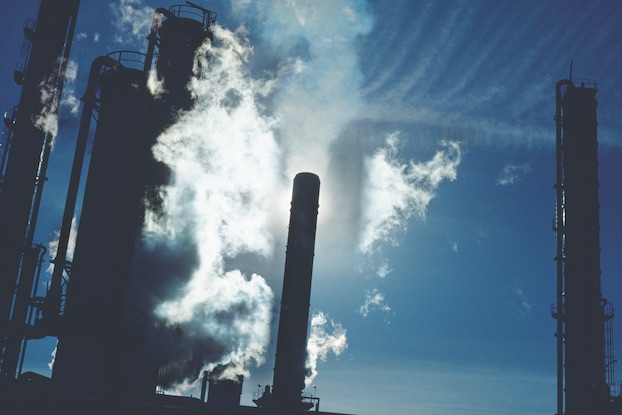SW La. chosen as spot for nation’s largest-ever investment in ‘carbon removal’
Published 1:58 pm Friday, August 11, 2023

- (Metro Creative Serivces)
A Southwest Louisiana project has received the funding to advance the first and largest direct air carbon capture facility of its kind in the U.S.
Gulf Coast Sequestration will be constructed in Southwest Calcasieu/Northwest Cameron Parish to store carbon dioxide emissions critical to meeting net zero targets by 2050. U.S. Sen. Bill Cassidy called it “historic” news, as the state will receive up to $603,000,000 from the U.S. Department of Energy, the largest single award from his Infrastructure Investment and Jobs Act in the entire country.
Project Cypress is expected to create 2,300 good-paying jobs and remove one million metric tonnes of carbon dioxide emissions each year from the atmosphere — an amount equivalent to roughly 222,500 gasoline-powered cars, according to a press release from the Governor’s office. Project Cypress is receiving an initial $50,000,000 to begin development of a regional Direct Air Capture hub. Pending final negotiations and continued achievement of development milestones, the project will receive a total of $500-$600 million of grant funding during the hub’s development.
Once completed, the hub will capture more than one million tons of carbon dioxide (CO2) from the atmosphere annually and sequester the CO2 permanently deep underground. Battelle will act as the DAC Hub owner in partnership with technology providers Climeworks Corporation and Heirloom Carbon Technologies, Inc. Project Cypress intends to rely on Gulf Coast Sequestration (GCS) for the offtake and geologic storage of captured atmospheric CO2.
“We are pleased that DOE has recognized the role that Project Cypress can and will play in advancing our energy transition through significant decarbonization,” said Gray Stream, CEO of GCS. “Deploying DAC provides a pathway to reaching net-zero or even negative carbon emissions and this project will support the longevity and sustainability of Louisiana’s important and essential industrial corridor and workforce.”
The owner of GCS, the Stream family of companies, is also supporting Project Cypress as the landowner and lessor of the host site in Southwest Louisiana, and will provide land suitable for the construction, installation, commissioning, operation, and maintenance of the DAC facilities developed by Climeworks and Heirloom.
In addition to the technical goals of the Hub, Project Cypress will make robust investments in the local community and region by creating a host of new jobs throughout the design, construction, and operation of the project. Beyond discussions with workforce development organizations already under way, a core component of Project Cypress will be an active collaboration with a broad cross-section of community stakeholders ranging from business groups and housing advocates to job training teams and new energy advocates. This two-way dialogue will ensure that the community is intimately involved in shaping the characteristics and deployment of the project in order
to maximize its benefits to the economy, the environment, and the needs of local neighbors.
“This is the kind of project we’ve been working towards for decades and fits with our overall decarbonization focus,” said Battelle Energy and Resilience Division Manager
Shawn Bennett. “Direct Air Capture technology is an important bridge to a future that greatly reduces the amount of legacy carbon dioxide in our atmosphere. But in addition to that, Project Cypress will be developed to the benefit of the local community, maximizing local job opportunities for the energy transition.’’
Some scientists, interviewed by the Associated Press, agree with making investment in carbon capture, but not all.
Claire Nelson, a postdoctoral research scientist at Columbia University’s Lamont-Doherty Earth Observatory said moving away from fossil fuels and producing the things we need without emissions are the most important ways to address climate change. But the scale of change needed makes direct air capture necessary as another tool.
“In order to have direct air capture ready at the scale we need by 2050, we need to invest in it today,” she said.
Tim Lieuwen, executive director of the Strategic Energy Institute at the Georgia Institute of Technology agreed that the pollution from some kinds of heavy industry will need to be addressed through technologies like direct air capture.
“This money could be so much better spent on actual climate solutions that would be cutting emissions from the get go,” said Jonathan Foley, executive director of Project Drawdown, a group that publicizes climate solutions. He cited energy efficiency and lowering emissions from agriculture, transportation, electricity generation as better approaches.
“What worries me and a lot of other climate scientists is that it potentially creates a fig leaf for the fossil fuel industry … the idea that we can keep burning stuff and remove it later,” Foley added.
It’s still unclear what role direct air capture will play in lowering emissions. Established technologies like solar, wind, and batteries continue to grow fast.





